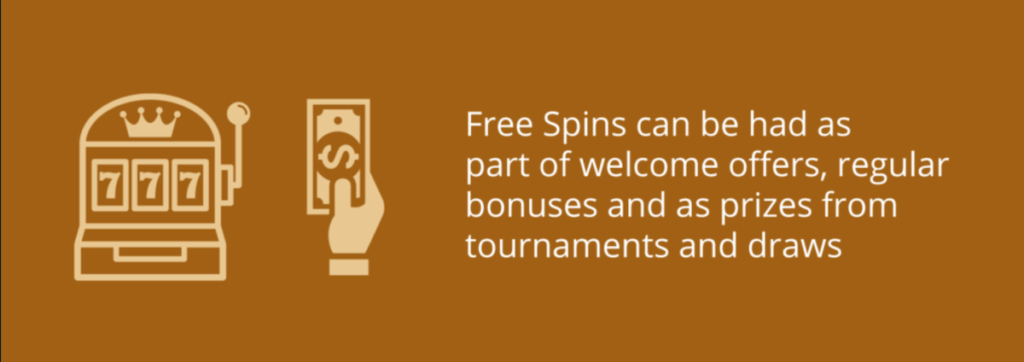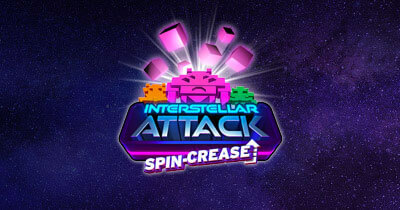Reprinted from the American Casino Guide – 1999 edition
By Steve Bourie
Today, the average U.S. casino makes about 65% of its profits off its slot machines. Actually, that number represents all different kinds of a casino’s machines including video poker, video keno, video blackjack, and all other varieties of electronic games. It didn’t use to be that way. In fact, it used to be just the opposite! Table games were the big revenue producers for the casinos and it was usually the men who played those games while their wives were kept busy at the slot machines.
Back in the 40s and early 50s, the old mechanical slots were full of gears and springs and were actually powered by pulling the handle which started the reels spinning. One of the problems with these machines was that they were limited in the size of the jackpots they could offer because they could only accept one coin, plus the hoppers, still relying on those springs and gears, were limited in the number of coins they could payout.
In the 60s the next generation of slots was introduced: the electromechanical. These machines still had a handle on the outside, but this time when you pulled it you activated an electric switch which started a motor to spin the reels. These machines increased the popularity of slots because they allowed multiple coin play and they also had electrically-powered hoppers that could pay out much larger jackpots. In the 80s computer-controlled slots were introduced.
These new machines revolutionized the industry because everything was now controlled by a computer chip. These electronic marvels could offer progressive jackpots that were linked among different machines and it wasn’t long before this new computer technology led to the introduction of a new game called video poker.
Today, the technology is so advanced that it allows slot machines that are hundreds of miles apart to be linked together by computer and offer jackpots that start at $10 million (Super Megabucks), or video poker to be played from five different decks at the same time (Five Deck Frenzy).
Although the technology constantly changes, one thing remains the same: the person responsible for the operation of the slot department is the slot manager. It is the slot manager who determines how the slot department will be laid out and how much the machines will be set to pay back.

As a slot player, you’ve probably had a few questions about how a slot department works: How do they decide where to put those slot machines out on the casino floor? Is winning purely luck? Are some machines really set to pay back more than others? And, if so, where do they put those better-paying machines? Well, the person with the answer to those questions would be the slot manager and I found two who were gracious enough to sit down for an interview in early 1998 to answer some questions about how their departments work and what goes into some of their business decisions.
The first stop was at the office of Rich Marino, Director of Slot Operations, at Luxor, the giant pyramid-shaped casino-resort in Las Vegas. Luxor is owned by Circus Circus, one of the largest gaming companies in the world, and the hotel itself, with more than 4,400 rooms, is the world’s third-largest hotel.
Rich began his career working downtown at the Union Plaza in 1976 in the coin room pulling the buckets under the machines. He eventually became the shift manager and a few years later he moved to the Gold Strike which later merged with Circus Circus. After a one-year stint at the Elgin Riverboat in Illinois, Rich returned to Las Vegas to help open the Luxor casino and he’s been there ever since.
Try an online casino for FREE. We have over 15 No Deposit Bonus Codes. No credit card needed, just sign up and start playing!
The Interview
Rich has more than 200 employees working for him in his slot department, including change people, floor people, money runners, booth cashiers; supervisors, assistant shift managers, and managers.
Bourie: What are the job functions of the various people in your department?
Marino: A change person’s main function is to provide our casino guests with change service without having to leave the machine. They also pay and verify jackpots on the machines. A booth cashier’s function is to provide change and coin redemption service. Floor persons do minor repairs, fill empty machines, and verify jackpots. Supervisors verify the filling of machines and the payment of jackpots up to certain amounts. Assistant Shift Managers and Shift Managers verify larger jackpots. …and manage all operations on their particular shift.
Bourie: What goes into your decisions when you lay out the slot floor and are deciding where to put slot machines?
Marino: Traffic flow is the most important consideration when laying out a slot floor. Placing lower denomination machines in high traffic flow areas to insure that the property always looks busy. Also, I place the more popular machines in slower areas to draw people to those locations. I look for what types of machines people are playing and I also run reports continually: which locations are doing best, my top 10 machines, my types of machines, etc.
Bourie: What is the most popular machine?
Marino: Wheel of Fortune is the most popular right now. IGT (International Game Technology) took its reel-spinning slot machine and added a second-feature spinning wheel on top that offers a bonus to players. They combined that with the popularity of the Wheel of Fortune game show and they now have the most successful machine on the market.
Actually, in the past 10 years, the slot industry has been kind of boring: just pull the handle and let the reels spin. Now, we have all these second-feature-type games with the Williams Games and the Vision IGT (International Game Technology) series. It makes it more exciting. It’s not a local type of excitement, but a tourist type of excitement. Tourists like them a lot more than the locals like them.
Bourie: I went to the gaming show recently and some of those newer slots seemed a little complicated.
Marino: In some cases, I have to actually sit down and play those games before I can figure them out. Initially, I thought that the customers would reject them, but it’s not happening. They are really taking to them. I believe a lot of the customers don’t even know which combinations they’re winning on. All they know is that they’re having a good time and accumulating a lot of credits.
Bourie: They actually don’t know the winning combinations?
Marino: Yes, but they know they’re having fun. They know there’s money coming and they’re winning credits and they’re having a good time. That’s the name of the game. The reality is that the casino has the edge. You know that and I know that and everybody knows that, but what you’ve got to do is let people have as much fun as they can so that even if they don’t win, they’re still having fun. It’s an entertainment experience. If you’re sitting there and take out a $20 bill, and you’re playing and that $20 bill is gone and you don’t hit anything, you’ve got a negative experience, you know what I mean?
Bourie: How about your decisions concerning the physical layout and where you want to place the machines?
Marino: What I try to do initially is create excitement by the front entrance of the casino so when a customer walks in they see people playing and having fun. I put popular nickel games upfront because it seems the nickel games always fill up first. (Pulls out the floor plan of the casino and points to various locations). As you can see I’ve located a couple of nickel banks upfront and some Wheel of Fortune games next to them.
I try to draw the customers in and create a good flow through the casino. This is the entrance (pointing to a different area of the layout) from the Excalibur when you come over from the moving walkway that links the two properties. Here, I try to create the same scenario by putting Wheel of Fortunes on this wall and the Williams games adjacent to them. And, as I said, I try to create excitement in each area and I do that with the types of machines or denominations. The nickel games kind of shield the front areas and we also put them in the back areas because customers are going to find them there. They’re going to find them no matter where you put them because they like playing nickel machines.
Bourie: I’d like to address some common beliefs that players have about slot machines and here’s the first one: “The casino can flip a switch to make the machines hold more.” Or, “the machines are set tighter on the weekends.” I’ve actually heard people say “there’s a big convention coming this week and they’re going to reset all the slots to make them tighter.” Any truth to those kinds of thoughts?
Marino: There is no magic switch. The only time we change a machine is when we convert it to a newer or more popular model. And, of course, when you get a new model, then you would change the e-prom (the computer chip that controls the payback percentage) to that new model. The manufacturer initially sets all the percentages for the machines when ordered. I determine the hold percentages I want by the denomination of the machine. The hold percentage averages for the Las Vegas Strip are 11% for nickels, 6.5% for Quarters, 4.5% for dollars, and 3.5% for five dollars and above.
Also, gaming-wise to do that, it’s not just going in and changing a chip. You have to go in and you actually have to take all of the money out of the machine. It’s got to be returned to the cashier’s cage, that money has to be counted and you have to assign a new number to that machine because that’s a new machine once you change the e-prom. So, gaming regulations require you to change the statistics on the whole new machine. It’s a whole day process to do that. It’s not just to go in and change the chip and leave and say “okay, I’ve tightened them up for the weekend.”
Bourie: Another thing many players believe is that “the best-paying machines are on the aisles.”
Marino: Not true. The best machines are on the aisle? I’ll tell you what, that’s a perception people have because most of them like to play machines on the aisle. They’ll walk up and play the machines in the end because they don’t want to play with somebody next to them. If you’ve got a guy playing here, here, and here, you’re not going to go right next to that guy. You’re going to go to the end so there’s nobody next to you. That’s why we’ve gone to these round configurations. People don’t like sitting next to each other. So, we’re going more and more to the round ones because people really like that a lot and these games do a lot better than the normal straight rows of slot machines. That’s why I try to break them up with rounds down the middle and slants.
But as far as the tighter and the looser machines, I set them up by model types. I mean, if I have a bank of quarter machines, I’ll have a Double Diamond; a Red, White, and Blue; and my percentages on those quarter machines are all the same. So, it doesn’t matter which machine I put where.
Bourie: Then you wouldn’t have a situation where a high-paying machine would be sitting next to a low-paying machine?
Marino: No. If the machines were the same denomination on a particular bank the hold percentages would be virtually the same. In my dollar machines I order everything at between 4% and 5%. So, you’re talking the difference between one percentage point and that’s only because certain models are only available at certain percentages. I mean, I would never put an 8% dollar machine next to one at 4%. I don’t do that here. Some places might do that, I don’t know. I try to give everybody an equal shot no matter what.
Bourie: So, there would be very little difference between a high machine and a low machine?
Marino: If I was going to set it up that way I would put the loosest machine in the middle as opposed to the end because they get the most play. That’s why it appears to be looser to the customer because it gets more play and more action and more people are playing it and it cycles more. And, it gets into those better cycles more often.
Bourie: Which brings us to the next question, “Do machines get ‘hot’ and payout more frequently?”
Marino: Sure they get hot, they also get cold. Through the cycle of a machine, it’s a percentage to pay out a certain amount over a period of time-based on the number of handles pulls the machine receives. However, the hot and cold cycles are random and indeterminable.
Bourie: When you order a slot machine do you have to tell the manufacturer what you want it to pay?
Marino: Yes.
Bourie: And, each manufacturer tells you the pre-approved percentages you can choose from?
Marino: That’s correct. (goes to the shelf, pulls down a book and opens it to a page). This book contains all the available hold percentages for these particular models and the denomination of a machine is what determines the hold percentage I would order for it.
This is what I order quarter machines at – 92.4% – which would be right around 7.5% holding for the house. If it’s dollars, I order this one (around 95%) and for twenty-fives (around 97%) or hundreds (around 98%), it goes up, like that. If it’s nickels, you start down here (around 89%). That’s the way it works.
Now, over a period of time, this quarter machine is going to pay back 92.42% and it’s going to hold around 7.5% for the house. And when I say over a period of time, that means over 10 million handle pulls.
Bourie: 10 million is the life cycle? On every machine?
Marino: 10 million is the number of handle pulls the manufacturer has determined it would take a particular machine to achieve that 7.5% hold calculation. Getting to that number though may take a year. That means in January, that machine might be hot, or today it may be hot. So, I may be holding…it’s a volatility index they call it…for the first two months of the cycle when that machine goes out on the floor, I may be in the negative. I may be paying out 400% or 500% on that game. But, the next month it may be tighter and at the end of that cycle, it’s going to hold at 8%.
Let me show you something else here. I just put these games on the floor last week. These are the new vision games from IGT (International Game Technology). These have been on the floor for approximately 14 days. What I do is an analysis: the coin in, jackpots filled, and it tells me my win per day, per unit, and my payout percentage. Now, the first week, which is hardly anything to analyze, but this machine is doing its handle per day. This is what it’s handling, this is what it’s winning, this is what it’s holding: 5.72%. It actually should be at 4.92%. So, it’s over holding by .80%. It’s holding too much.
Bourie: So, you always have a variable there?
Marino: Right. There’s a variance there. The next game on the row, okay, this one is not holding. It’s half of what it should be holding.
Bourie: That’s half of what it should be holding, based on what the manufacturer said?
Marino: Right. It should be holding 5.2%, the manufacturer said, and it’s only holding 2.75%, but it’s only been on the floor for two weeks. When you see a machine not holding…we do a comparison at the end of each month of winners and losers. Then we look at the coin in and we see how long they’ve been on the floor. Most of the time, I’ll look at a year-to-date number, or a lifetime number on the machine to see where they are actually at.
Bourie: Will this tell you how many actual pulls were made on that machine?
Marino: Sure. You just divide, or you go to the machine itself and you could see exactly how many handle pulls. Normally, you just divide it by the number of coins in and you could tell the handle pulls. That’s basically what we do, but we don’t tighten them up, or loosen them up. Once they’re out there, they’re out there. The only time we do conversions is when we see a model not getting enough play. Then we say it’s not popular and we try something else.
Bourie: Do you ever have a problem, after a year, where a machine doesn’t make money for you?
Marino: No, usually a machine will hold what it is the percentage to hold if it’s had enough handle pulls. If they’re supposed to hold 5%, they’ll hold 5% after they’ve been on the floor for a while Usually when they don’t make money, they’re holding what they are supposed to hold, but it’s not enough for the house average. What you would do is take your bottom 20% of your machines and convert those to more popular models.
But to go back to what you were asking before, the hot and the cold factor? That’s definitely true. The machine can be hot today and colder than anything tomorrow. It will pay out 400% today to you and tomorrow it might take 400% from somebody else.
Bourie: Okay, but there’s no way to tell if it’s going to stay hot, is there? It reminds me of when I talk to people about playing craps. They all say “just find a ‘hot’ crap game.” I say, “fine, you may find a ‘hot’ crap game, but all you know is what happened in the past. You don’t know what’s going to happen in the future.”
Marino: Sure, It’s the same as a “hot” slot machine, you just don’t know what the next pull will bring.
Bourie: Right. But people say, “well if it’s a ‘hot’ machine, it’s going to keep paying out.” People are under the assumption that it’s going to keep paying out, and I tell them “no, it’s purely luck.”
Marino: You’re right. They don’t pay out forever. All it is, is luck. Being in the right place at the right time.
Bourie: How about this one: “don’t play a machine that just hit a jackpot?”
Marino: Well, it doesn’t matter.
Bourie: And that’s because the odds remain constant on every pull of the handle?
Marino: That’s right.
Bourie: One last question. Do you have any suggestions for players?
Marino: Suggestions for players? The only suggestion I have is to just play the machine that you enjoy the most and that you have a good time at. I mean…I play a little bit. I go out with my wife and she’ll play video poker machines. I’ll play video poker with her, but I just play the machines that I enjoy playing. I’ll play machines that I see paying back the best to the customer (by looking at the paytable). Those are the ones I’ll look for, and locals do that. If you’re a local customer, that’s what you look for: the good video poker machines. Just like Jeff (referring to Jeff Compton, author of the Las Vegas Advisor Guide to Slot Clubs) will tell you. He’s an expert at video poker machines.
Rich’s answers were surprisingly candid and they certainly laid to rest some long-standing beliefs among slot players as to how slots are set up in a casino. For years slot players have always believed that some machines were set much higher than others within a casino. Rich dispelled this myth by pointing out that all of his machines within a particular denomination were set to pay back approximately the same amount. He pointed out that not all manufacturers offer the exact same percentages in their computer chips so there could be a difference of as high as 1% but you really won’t find a situation where the one-quarter machine that’s set to return 92% would be sitting next to another quarter machine set to return 82%.
If you look at the numbers from the Nevada Gaming Control Board regarding the returns on slot machines that are shown in this book it certainly corroborates what Rich was saying. After all, if the average $1 machine returns 95% how much of a difference could there be between the high and the low? Do you think half of the $1 machines are set at 99% and the other half are set at 91% in order to get that 95% average? Sorry, but it just doesn’t work that way. Yes, there are differences among machines but, once again, the amount is minimal and it probably amounts to no more than 1%.
And what about the common belief that machines at the end of an aisle are set to return the most? Well, Rich killed that idea too. He explained that it just seems that end machines pay out more often simply because they’ve played more often.
This is somewhat akin to the “bad player” theory in blackjack. According to this theory, if there’s a bad player at the blackjack table who constantly makes poor decisions it will somehow affect the order of the cards and cause the good players (who make correct playing decisions) to lose more often. The truth is that the bad player really has no effect on the game because sometimes his decisions will hurt you and sometimes his decisions will help you. The problem is that you only tend to remember the situations where you lost because of his poor play and forget the times that you won because of his boneheaded moves.
This same theory can apply to slot machines at the end of an aisle. When you’re playing in a casino, or just walking through, you’ll only remember the times you saw people winning at machines, not losing. Since the end-of-the-aisle machines get more play, they will, of course, have more winners and people will tend to remember them as the better paying machines.
As far as constantly changing the payback percentages on the chips to make machines “looser” or “tighter” Rich pointed out that it’s not quite that simple and that changes are rarely made because of all the extra work that’s involved.
In the July 1998 issue of Las Vegas Advisor this same subject was covered in an interview with three different Las Vegas casino slot managers and two officials from the Nevada Gaming Control Board. The Advisor writer discovered that there actually are some slots where the percentages can be changed by flipping a switch, but it only applies to machines that are connected together in a “bank” where they all share the same centralized chip. The vast majority of the machines in a casino, however, are not capable of this function as they each have their own internal chip.
The Advisor story also went on to point out that Nevada law requires casinos to do paperwork whenever a chip is changed and it must be completed within 24 hours. Also, the casino must complete additional accounting paperwork for filing with the state. Evidently, the process is so time-consuming the story concluded that “ no one we talked to even had a secondhand story of a Nevada casino that frequently changes chips.”






